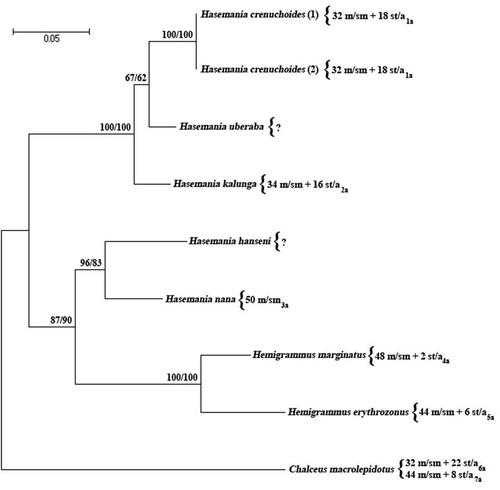Figures & data
Figure 1. Hasemania crenuchoides karyotype. (a) Karyotype of the female (2n = 50) with conventional Giemsa staining. Chromosome pair 6 shown with Ag-NOR marking. (b) Karyotype of the male (2n = 50) with conventional Giemsa staining. (c) Karyotype of the female submitted to C-banding. (d) Karyotype of the female with DAPI staining.

Table 1. Pairwise p-distance in black and standard error in blue for the COI gene.

